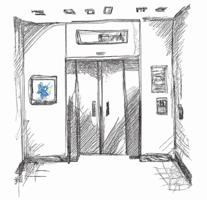PROS and Tacton CPQ are two popular CPQ vendors that offer advanced configuration functionality for...
Configuration: Tacton CPQ vs Infor CPQ
"Stripped down to nuts and bolts, would you still know your product?" Imagine the satisfaction of showcasing your product, in all its glorious detail, to a customer, armed with the confidence that you could match their every need. This could be your reality with a Configuration, Price, Quote (CPQ) tool – but with so many options out there, which should you choose?
Today, we're deep-diving into the engines of two giants in the industry: Tacton's constraint-based CPQ and Infor's rules-based CPQ. Buckle up!
A CPQ solution can be the secret ingredient to transforming your sales process, particularly if your products are complex. But there's a world of difference in how these tools create and manage those configurations.
Let's start with Infor CPQ. Infor's rules-based system relies on a predefined set of rules that dictate product configuration. Think of it like a choose-your-own-adventure book – every choice you make leads you down a predetermined path. The advantage? Simplicity. The system is straightforward to understand, with clear, if linear, progression from one decision to the next. However, this strength can also be its Achilles heel – it might struggle when complexity escalates, and the decision paths become a labyrinth.
Now, let's shift gears to Tacton CPQ. In Tacton's universe, constraint-based configuration reigns supreme. Instead of a simple "if-this-then-that" mechanism, Tacton's system resembles a network of interlinked decisions, more akin to a web than a linear path. Each decision point influences and is influenced by others, a complex dance dictated by constraints. It sounds intricate because it is – but it's also more capable of handling that labyrinth of complexity that might stumble a rules-based system.
But, what does it mean for you, the user?
For those with relatively straightforward product offerings, Infor's rules-based system can be more than enough. It's easier to implement and maintain, and its linear nature can make it more intuitive to new users. However, for businesses with highly complex, customizable products, the flexibility of Tacton's constraint-based system could be a game-changer, offering a level of detail and accuracy that a rules-based system might struggle to match.
The visualization capabilities of both platforms further widen this divide. Infor's visualization is adequate, functional, and serves the purpose. On the other hand, Tacton's advanced 3D visualization is a different beast altogether. Imagine viewing a real-time, 3D model of your product, changing as you tweak its features – Tacton makes it possible.
The truth is, both Tacton and Infor are stalwarts in the CPQ arena, and they wouldn't have achieved their status without delivering value to their customers. Your decision depends on your unique business needs, the complexity of your product, and your strategic goals. So, are you ready to harness the power of product configuration? Whether you choose the straight path of rules or the intricate dance of constraints, your journey towards better sales efficiency starts here.




